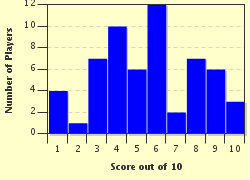Quiz Answer Key and Fun Facts
1. Near which city in South Africa, which is also the largest in sub-Saharan Africa, is the Cradle of Humankind located?
2. What geological feature in the Cradle of Humankind helped make it possible to find fossils in the area?
3. What famous discovery was made at the Sterkfontein Caves in the Cradle of Humankind?
4. At the present time, "Australopithecus africanus" is considered to be one of our oldest human ancestors. What feature of the hominin most closely links it to humans?
5. What fossil site in South Africa was added to the Cradle of Humankind because of an important discovery made there in 1924?
6. A nearly complete australopithecine fossil was discovered in Sterkfontein Cave in 1994. What was it named, due to the size of the ankle bones?
7. Which of the following hominin species has NOT been found in the area called the Cradle of Humankind?
8. The ability to control the use of fire was invaluable to early hominins. Can you name the species that lived in the Cradle of Mankind that was able to control fire?
9. At the present time, what is believed by some scientists to be the significance of the discovery in the Cradle of Humankind which is classified as "Australopithecus sediba".
10. The most famous discovery made in the Cradle of Humankind was Lucy.
Source: Author
ponycargirl
This quiz was reviewed by FunTrivia editor
bloomsby before going online.
Any errors found in FunTrivia content are routinely corrected through our feedback system.

